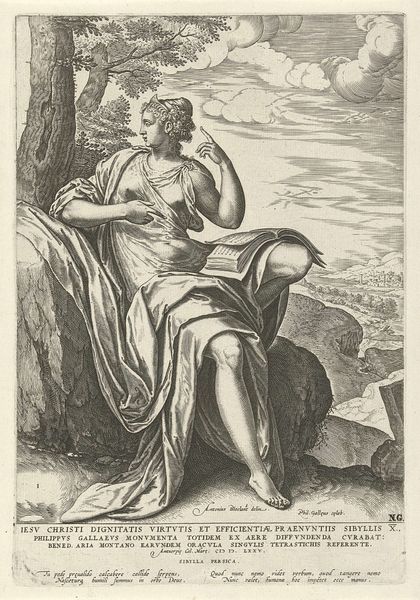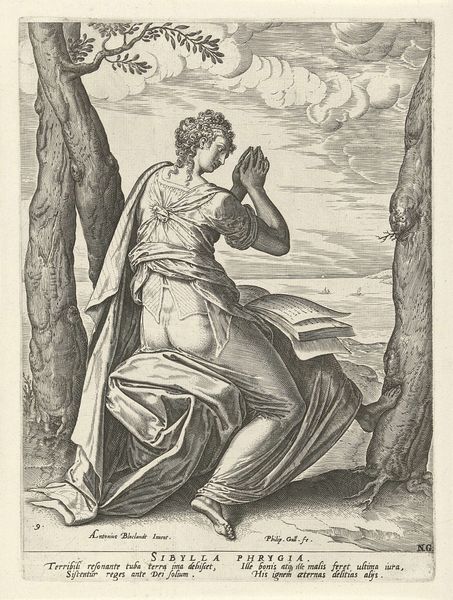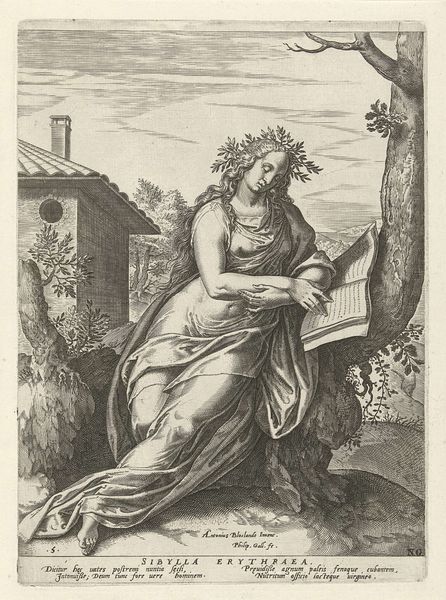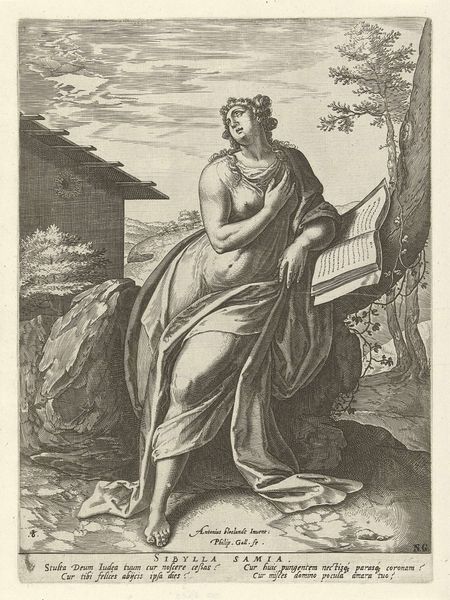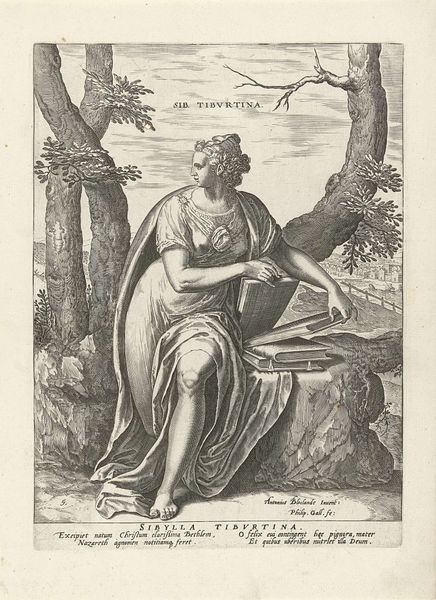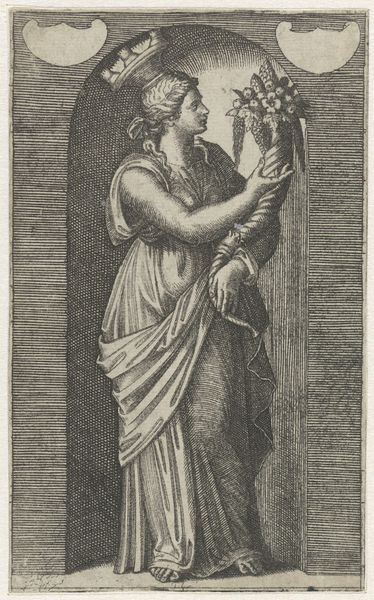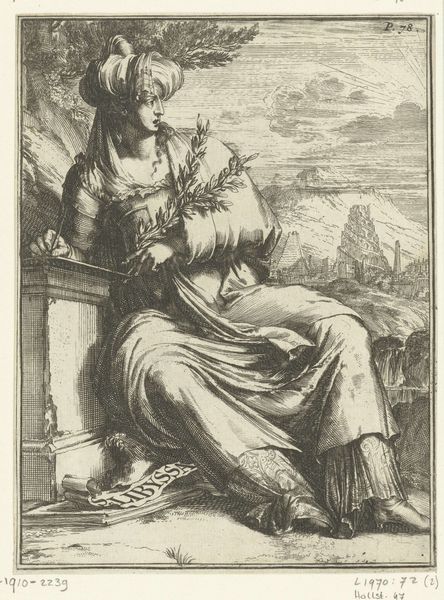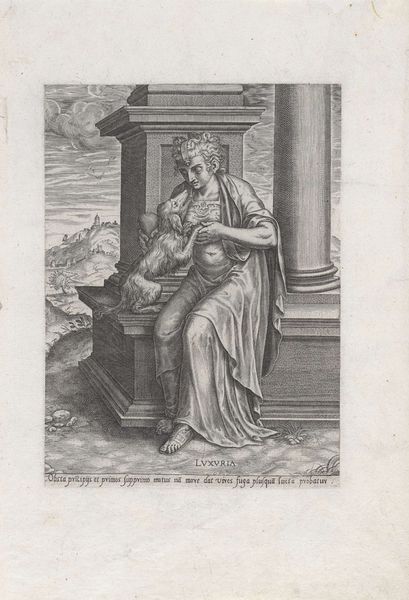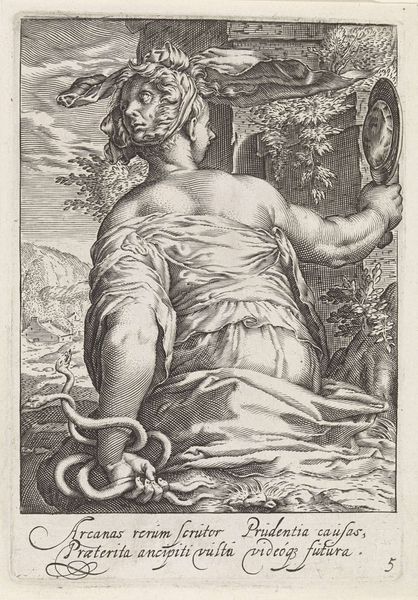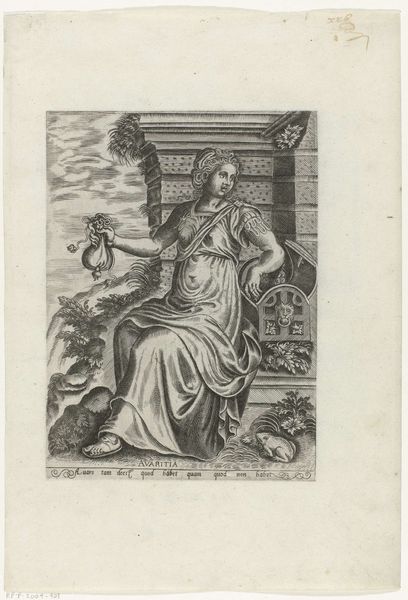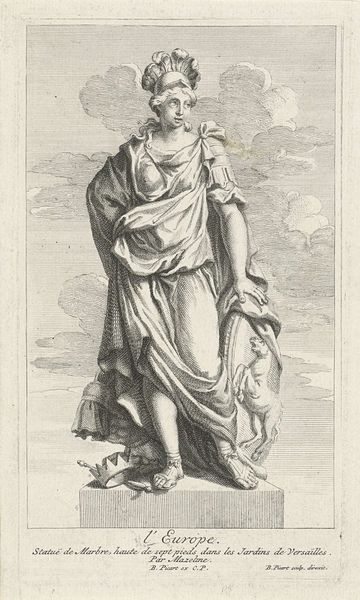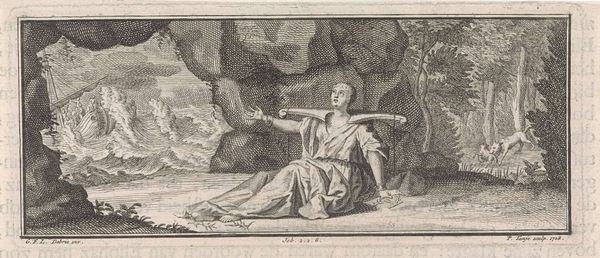
drawing, print, engraving
#
portrait
#
drawing
# print
#
pen illustration
#
old engraving style
#
caricature
#
mannerism
#
figuration
#
11_renaissance
#
limited contrast and shading
#
line
#
history-painting
#
engraving
Dimensions: height 290 mm, width 212 mm
Copyright: Rijks Museum: Open Domain
Curator: This is Philips Galle's "Delfische Sibille," an engraving from around 1575 currently held at the Rijksmuseum. Editor: It's immediately striking—almost stark, with the figure so crisply rendered against a fairly barren landscape. I'm drawn to the line work and the tangible sense of the paper it's printed on. Curator: Indeed, the Sibyl, traditionally a figure of female prophecy, sits almost in meditation, doesn't she? Let's consider the complexities of representing female knowledge and power during the Renaissance. It evokes questions of societal roles and the accessibility, or inaccessibility, of wisdom to women at that time. Editor: Absolutely, and the materials used speak to that accessibility in a very practical sense. Engravings like this, reproduced as prints, allowed for a wider dissemination of knowledge than a unique painting would. The labor of the artist to transfer knowledge through the repeatable act of printmaking really challenges assumptions about 'high art' and craftsmanship. Curator: Galle cleverly weaves the classical theme with a very contemporary, Mannerist sensibility in the exaggerated anatomy, particularly her forearms, and the dramatic drapery. Do we see, perhaps, a subtle commentary on the performance of wisdom, a commentary on expectations projected onto women deemed insightful? Editor: And let's note what is surrounding her: books. One tome sprawled on her lap, another laying in front of her and even an item on her head is constructed to mimic books. It speaks of intense study, but also makes me think of bookmaking. Are the binders wealthy? Where was the paper sourced from and under which working conditions? These aspects influence my impression of the piece. Curator: Fascinating. It seems the interplay between the subject of the Sibyl and the printmaking itself emphasizes the importance, but also the complicated realities, of knowledge and the role of women in its creation and dissemination in the 16th century. Editor: For me, Galle’s piece underlines the necessity of critically examining production processes and materiality to understand the social fabric within which art operates, questioning boundaries and highlighting social issues in access to knowledge.
Comments
No comments
Be the first to comment and join the conversation on the ultimate creative platform.
